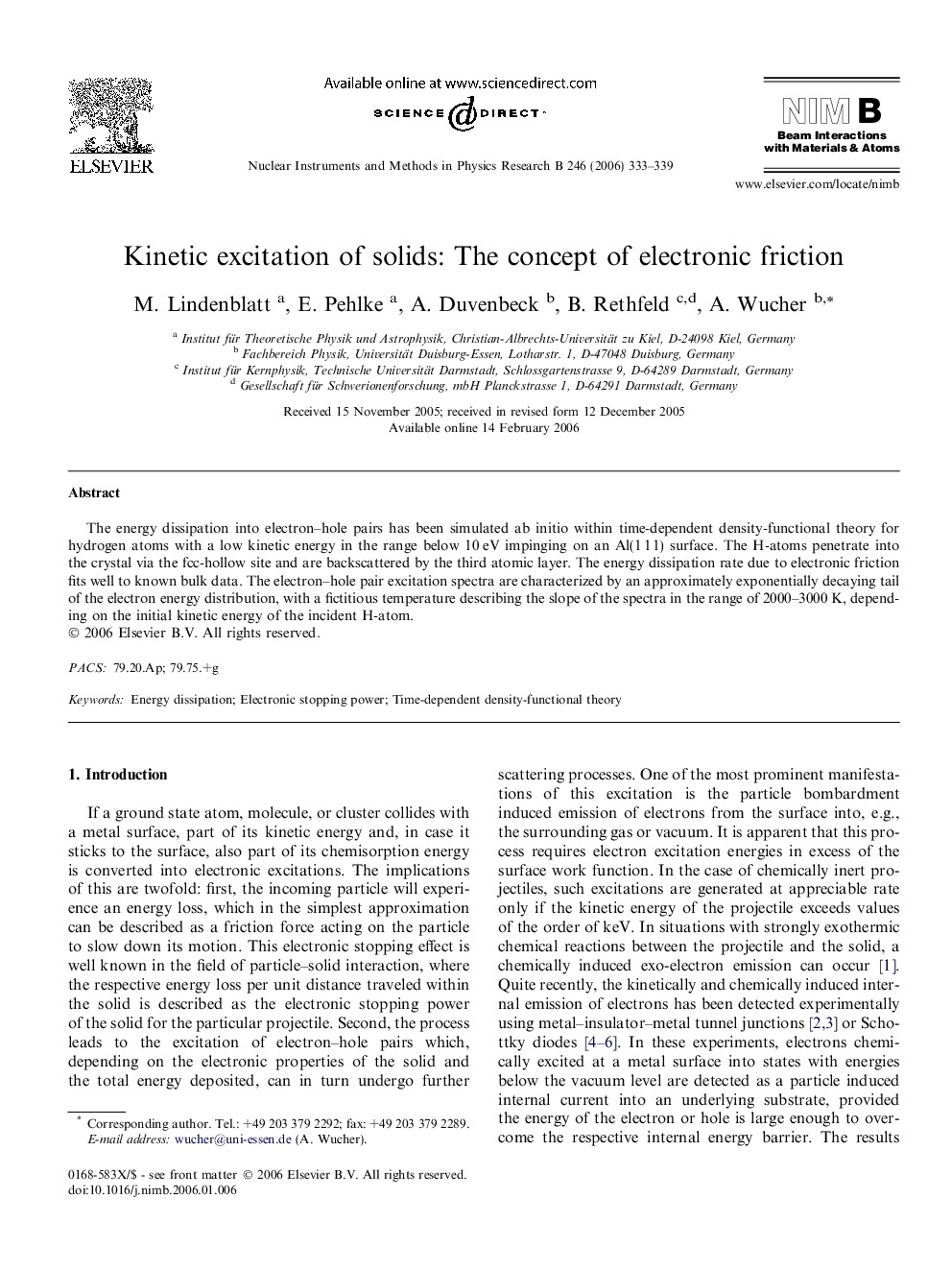| Article ID | Journal | Published Year | Pages | File Type |
|---|---|---|---|---|
| 1687060 | Nuclear Instruments and Methods in Physics Research Section B: Beam Interactions with Materials and Atoms | 2006 | 7 Pages |
Abstract
The energy dissipation into electron–hole pairs has been simulated ab initio within time-dependent density-functional theory for hydrogen atoms with a low kinetic energy in the range below 10 eV impinging on an Al(1 1 1) surface. The H-atoms penetrate into the crystal via the fcc-hollow site and are backscattered by the third atomic layer. The energy dissipation rate due to electronic friction fits well to known bulk data. The electron–hole pair excitation spectra are characterized by an approximately exponentially decaying tail of the electron energy distribution, with a fictitious temperature describing the slope of the spectra in the range of 2000–3000 K, depending on the initial kinetic energy of the incident H-atom.
Related Topics
Physical Sciences and Engineering
Materials Science
Surfaces, Coatings and Films
Authors
M. Lindenblatt, E. Pehlke, A. Duvenbeck, B. Rethfeld, A. Wucher,
